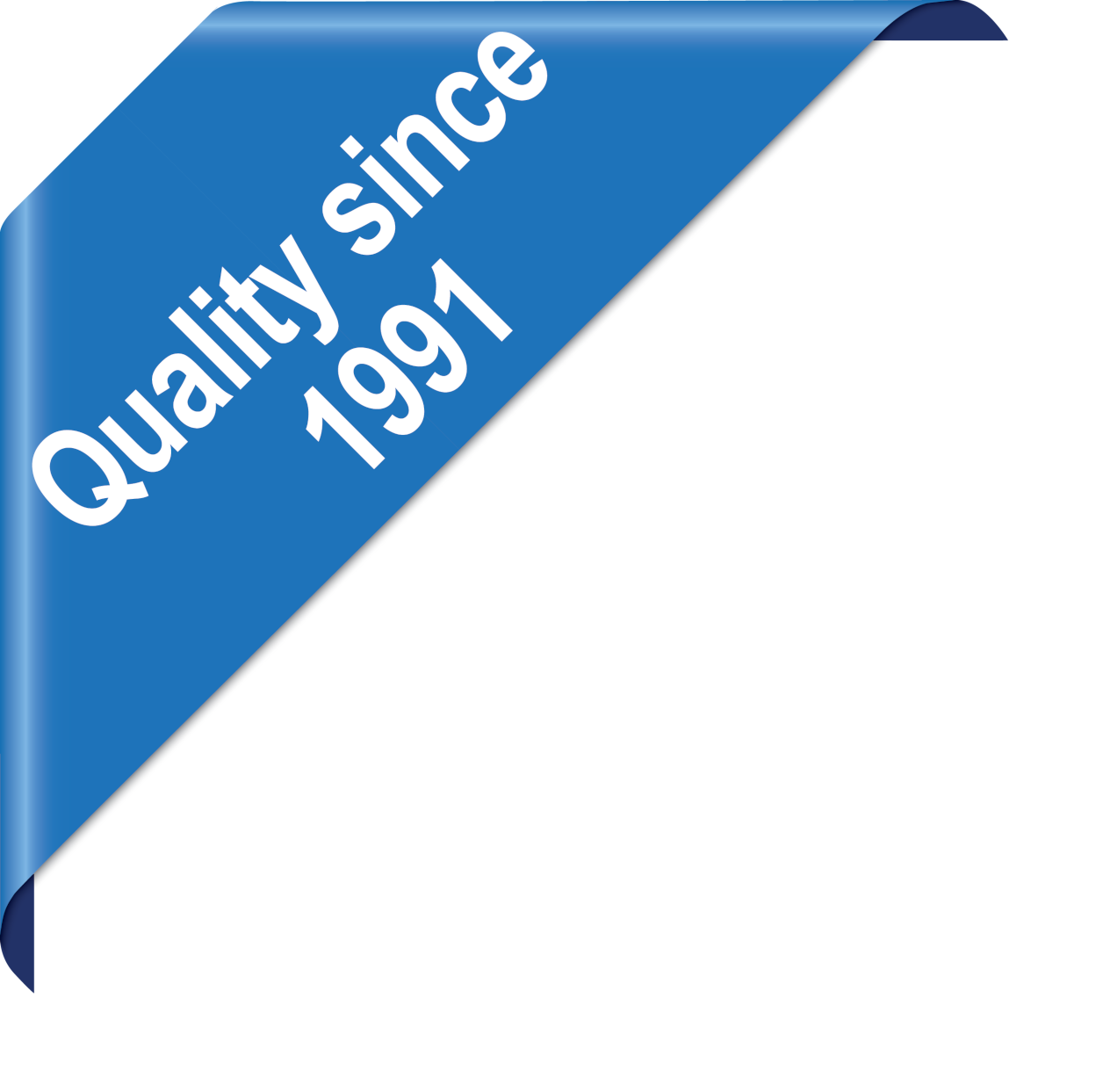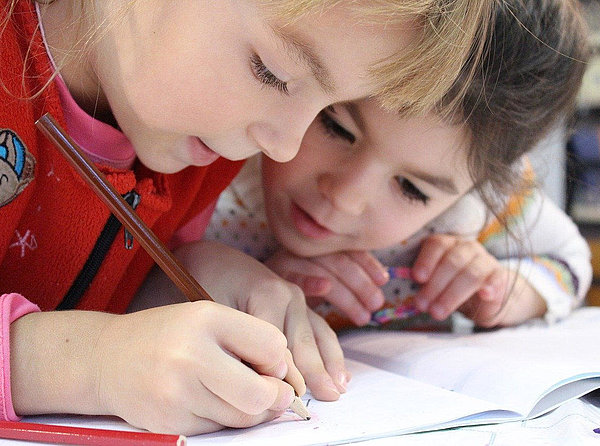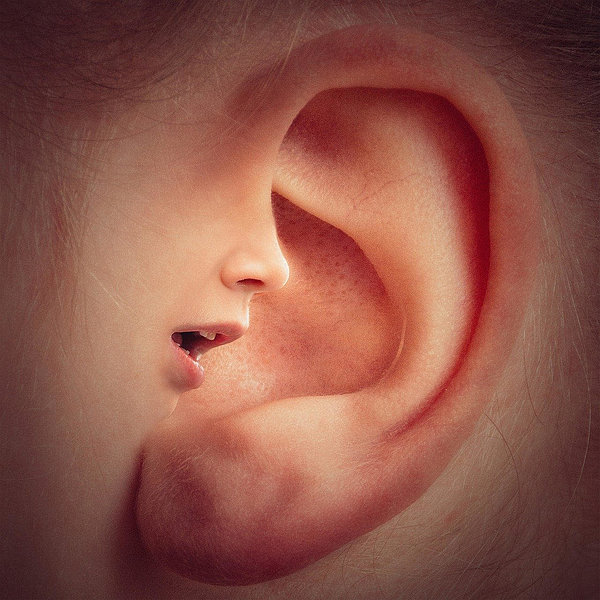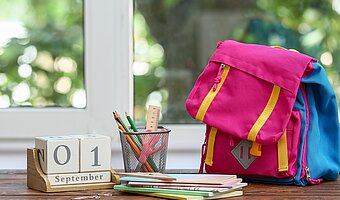
What is the best way to learn?
Four different learning types - Learning more effectively with the right learning type
In order to be able to learn successfully, it depends on many different factors. In addition to the right environment, motivation and appropriate learning material, it is above all the way in which we learn that is decisive. To describe the different channels of perception through which we learn, the term "learning type" is often used.
In practice, four learning types are generally distinguished. In the following, we will introduce you to the different learning types so that you will have the opportunity to organize the learning process more efficiently in the future.
Table of contents
How the different learning types learn
The right combination leads to success
The visual learning type
The auditory learning type
The communicative learning type
The motor learning type
All characteristics, popular methods, and tips on learning types at a glance
Which type am I?
Learning support through Lern-forum
Listen, see, write, communicate and practice - How different types of learners learn

If we look at a class group, it is easy to see that among the learners there are some who absorb information more easily, while the other classmates have difficulty remembering the subject matter or understanding the process.
Now, one might jump to the conclusion that some are more interested and intelligent than other students. But with knowledge about the different learning types, it is easier to understand why some students find it easier to learn in class and others have to revise the material at home or in tutoring.
If your child has difficulty following what is going on in class, you must enable him or her to review the material as efficiently as possible. Therefore, it is necessary that you and your child get to know the four different learning types and make use of them in order to prepare the learning material as easily and efficiently as possible.
In general, a distinction is made between the following four learning types:
- Visual type: See, read, take notes
- Auditory type: Listen, memorize, remember
- Communicativer type : Talk, exchange, summarize, discuss
- Motor (also haptic or kinesthetic) type : Try out, experiment, move
The right combination leads to success
All four learning types are basically anchored in each of us. Therefore, it makes sense to use all four sensory channels when learning and not to be rigid about one method. Listening, seeing, speaking, and trying out are the best ways for most learners to retain the material they are learning. However, you can use the learning method that best suits your learning type to grasp the main part of the subject matter and supplement it with the other methods. Because one to two learning types stand out with each individual particularly, so that the other two to three learning types step somewhat into the background. By combining the methods, the learner achieves the greatest success!
If the learners recognize where their strengths lie, they can use these consciously - depending on the subject and the required learning material - and learn faster, easier and more purposefully and increase the learning success significantly.
In the following, we will introduce you to the individual learning types with corresponding learning tips in more detail.
The visual learning type uses eidetic memory, which is often also referred to as photographic memory. Visual perceptions and information are stored and retrieved in the sensory memory of our brain.
Visual learners memorize learning material best by reading and writing. Learning is facilitated when action sequences follow recurring patterns and are depicted visually. This can be done, for example, in the form of:
- Pictures
- Graphics
- Diagrams
- Cards
- Charts
take place.
Spoken information from videos or audio recordings should be avoided because words are more difficult to process and store in memory.
Strengths of the visual learner:
- Follows instructions instinctively
- Can visualize objects easily
- Has a great sense of balance and alignment
- Is an excellent organizer
- Better ways to learn:
Better ways to learn:
- Studying notes on mind maps, whiteboards, PowerPoint presentations, study posters, cheat sheets, etc.
- Creating flashcards
- Using diagrams and reading material
- Write and visually present learning material
- Presenting information in a structured and organized way
- Use colored pens and markers
A proven method for visual learners is also the localization technique (loci method, route method), in which learning content is linked in the imagination with familiar places in specific locations. This allows learning content to be organized, laid out, and recalled in a specific order. How it works:
- Choose a suitable and familiar place (e.g. children's room, kitchen, garden, walking path)
- Set waypoints with a specific order (e.g. desk, bed, closet, etc.)
- Link the individual waypoints to the information to be learned (such as vocabulary, definitions, technical terms). You can also attach flashcards with the material to be learned to the waypoints. To reinforce, walk the individual waypoints and memorize the information at each station. In this way, you consolidate the visual route and a mental image of the learning material is created.
- After consolidation, the learning material can be easily recalled by a visual walk along the path route.
Auditory learning begins even before birth in the womb. As early as the 16th week of pregnancy, hearing is functional and thus the first fully developed sensory organ. Fetuses are able to distinguish the voices of familiar people, such as the mother and father, and respond to certain recurring sounds.
After birth, at the age of 5 months, the baby is already able to recognize from which direction sounds are coming and can consciously turn towards them. From this point on, babies have also learned to recognize their names. In general, the sense of hearing plays an important role in the first years of life. In this way, babies learn the language and can assess the state of mind of the other person on the basis of the tone of voice, as well as "hear" and explore their environment.
In terms of information intake, this perceptual channel is gradually replaced by the visual channel as we learn to read and write. Thus, it happens that we can either use both channels equally well or one of the channels is weakened at the expense of the other so that we are better able to absorb and process information either visually or auditory.
Consequently, the auditory type of learner learns best when information is heard or spoken. He benefits from lectures, group discussions, and other strategies that involve discussing things and reproducing them aurally.
For auditory types, it helps to speak the content in front of them while learning. Through ambient noise or music, it can happen that the learner is quickly distracted and becomes unfocused. However, the opposite can also happen and certain music and sounds can stimulate concentration and motivation.
Strengths of the auditory learner:
- Recognized subtle changes in a person's tone of voice
- Oral examinations
- Narratives
- Solving difficult problems
- Group work
Better ways to learn:
- Active listening and participation in class
- Singing participation in class
- Repeating, recording, and listening to recordings of learning content
- Reading work, literature, recordings, etc. aloud
- Learning with a partner or in a group
Active listening in class is the best learning method for the auditory type. How it works:
- Actively follow what is happening in class through eye contact and sort out facts that are already unimportant. Only the important facts are noted down.
- Repeat and paraphrase the learning content you have written down. While doing so, speak the information quietly to yourself, record what is said, or speak it with a learning partner.
Through active listening, you automatically improve your communication skills and can approach your conversation partners empathically, openly, purposefully, and argumentatively.
The communicative learning type - Talking is gold after all

As a social being, a person is primarily shaped by his environment and adopts behaviors, views, and motives from people in his immediate environment, such as family, friends, or work colleagues.
It is particularly important to the communicative type; to test his views, his thinking and his acquired knowledge through interactions in order to obtain the following information and insights:
- Feedback on his behavior
- Alternative viewpoints
- Performance comparison
- Confirmation
Thus, he is better able to benefit from model learning, increase his performance, and develop positive self-confidence.
Therefore, it is important for communicative learners to develop and assimilate information through discussion, conversation, and questioning. In doing so, it is important for him to put himself in the position of both the questioner and the explainer.
Strengths of the communicative learner:
- Lead discussions
- Approach people
- Empathy
Better ways to learn:
- Group discussions
- Presentations
- Exchange in learning groups
- Taking different points of view
- Role plays
The communicative type often overlaps with the auditory type, as it is easy for them to engage with their interlocutors and actively listen to them. Therefore, the communicative type can also make use of learning methods of the auditory type and vice versa.
The motor/ haptic/ kinesthetic learning type - learning through practice

Toddlers often learn things playfully and incidentally in a relaxed atmosphere. Through trial and error, successes and failures, they gradually grasp things and get to know their environment better.
Motor types make use of precisely this behavioral pattern in that they can best comprehend and store information and facts if they try out the actions themselves. Movements and the perception of sensations can also promote the willingness to learn. Motor types achieve the greatest success according to the motto: "learning by doing."
Strengths of the motor learner:
- Coordination
- Fast receptivity
- Willingness to experiment
- Sports, art and theater
- High energy level
Better ways to learn:
- Conducting experiments
- Acting in a play
- Learning while standing or moving
- Reproducing actions through gestures
- Making doodles
- Learning during a sports activity such as hoop jumping or ball shooting
The motor type can draw on all channels of perception and use visual and auditory methods of learning, combining them with his love of experimentation and movement.
All characteristics, popular methods and tips on learning types at a glance
| Visual learning type | Auditory learning type | Communicative learning type | Motor/ haptic/ kinesthetic learning type |
Features | Quickly capture graphics, charts & co. Notes are accompanied by symbols, drawings, lists, and tables Prefers teachers who use pictorial language and gesture | Listening, even over long stretches Few notes Concentrates on listening When writing, formulates sentences in his/her head first discussions | Discussions and conversations help to recall what has been learned later on An exchange about what has been learned Prefer lectures and presentations must | Must always try things out/touch them myself to understand them better Exercises and role plays help internalize information and concepts Always on the move, hands are rarely still |
Preferred learning methods/ | Visualization in the form of (interactive) graphics, charts & co. Video material Images | The classic lecture / lesson Expert podcasts, radio broadcasts and other listening media Conversations and discussions (also passive as listener) | Small seminars with lively discussions Lively discussions in learning groups Lectures and presentations | Practical exercises and walkthroughs Role plays and "playful" exercises Concrete application examples for complex issues |
Learning tips | Targeted learning with infographics Flashcards with images to create mnemonic bridges Find video material, online seminars and workshops Create mind maps to visualize learning and thought processes | Read aloud for yourself at times Make and listen to recordings Create a quiet working atmosphere Listen to recordings of lectures | Seek active and motivated learning group Go through discussions with different points of view Create and deliver presentations and lectures on the subject Explain learning material to friends or family in an understandable way | Exercises Develop your own exercises Create report books and flashcards Using stress balls for kneading or other objects for concentration Experiments |

Which type am I?
People learn in different ways, so it should come as no surprise that we also have our own unique ways of learning. A barrier to effective learning can occur when learners are unaware of and do not use different learning styles.
It can be helpful for the student/learner to develop strategies for more effective learning if they are knowledgeable about how they learn best and what type of learner they are most likely to be. Accordingly, it is highly recommended to take a learning type test or discover from experience which learning method suits one personally best in order to achieve enjoyment and success in learning.
It should also be pointed out again that the greatest benefit comes from the combination of learning methods. Therefore, you should make sure that you do not stiffen on only one method.
Learning support through Lern-Forum
With the knowledge about the different learning types, we try to design our courses as versatile and appealing as possible, so that every learning style is supported. In addition, we also give the students individual tips and instructions on how they can learn more efficiently and with pleasure in the future according to their learning type.
Das duale Bildungssystem der Schweiz bietet Chancen - nicht für alle
Das duale Bildungssystem in der Schweiz: eine Chance für einige, aber nicht für alle: wir erklären die Bedeutung vom dualen Bildungssystem und seine Vorteile.
Ab wann sollte man mit der Gymivorbereitung beginnen?
Ab wann Gymivorbereitung beginnen in Zürich? Für das Langzeitgymnasium in der 4. Klasse und für das Kurzgymnasium spätestens in der 1. Sekundarklasse.
Gymnasium-Zürich-Ranking: bestes Gymnasium im Kanton Zürich
Ranking der Gymnasien im Kanton Zürich (Gymi-Rangliste): das beste Gymnasium in Zürich finden; eine der besten Kantonsschulen der Schweiz.






